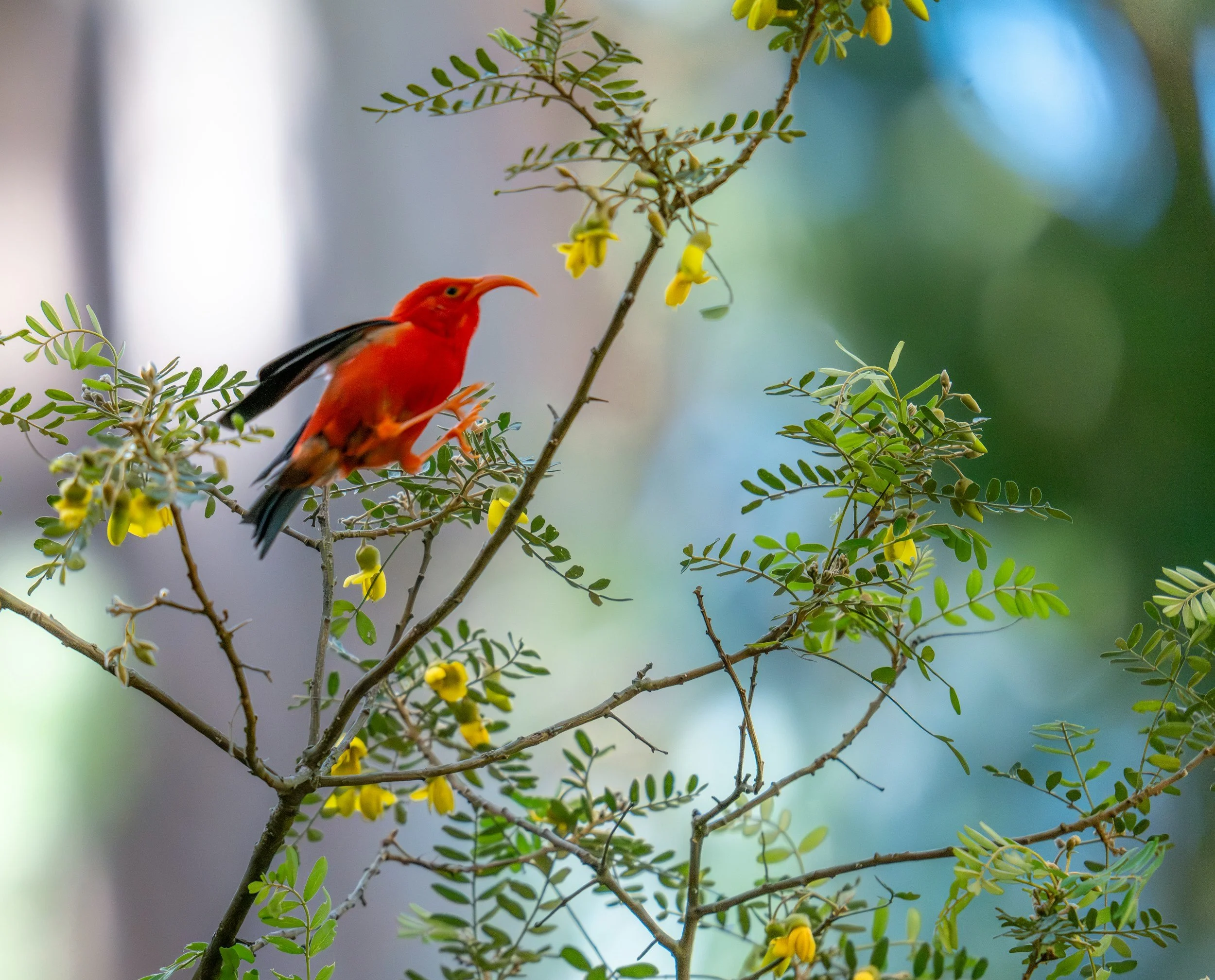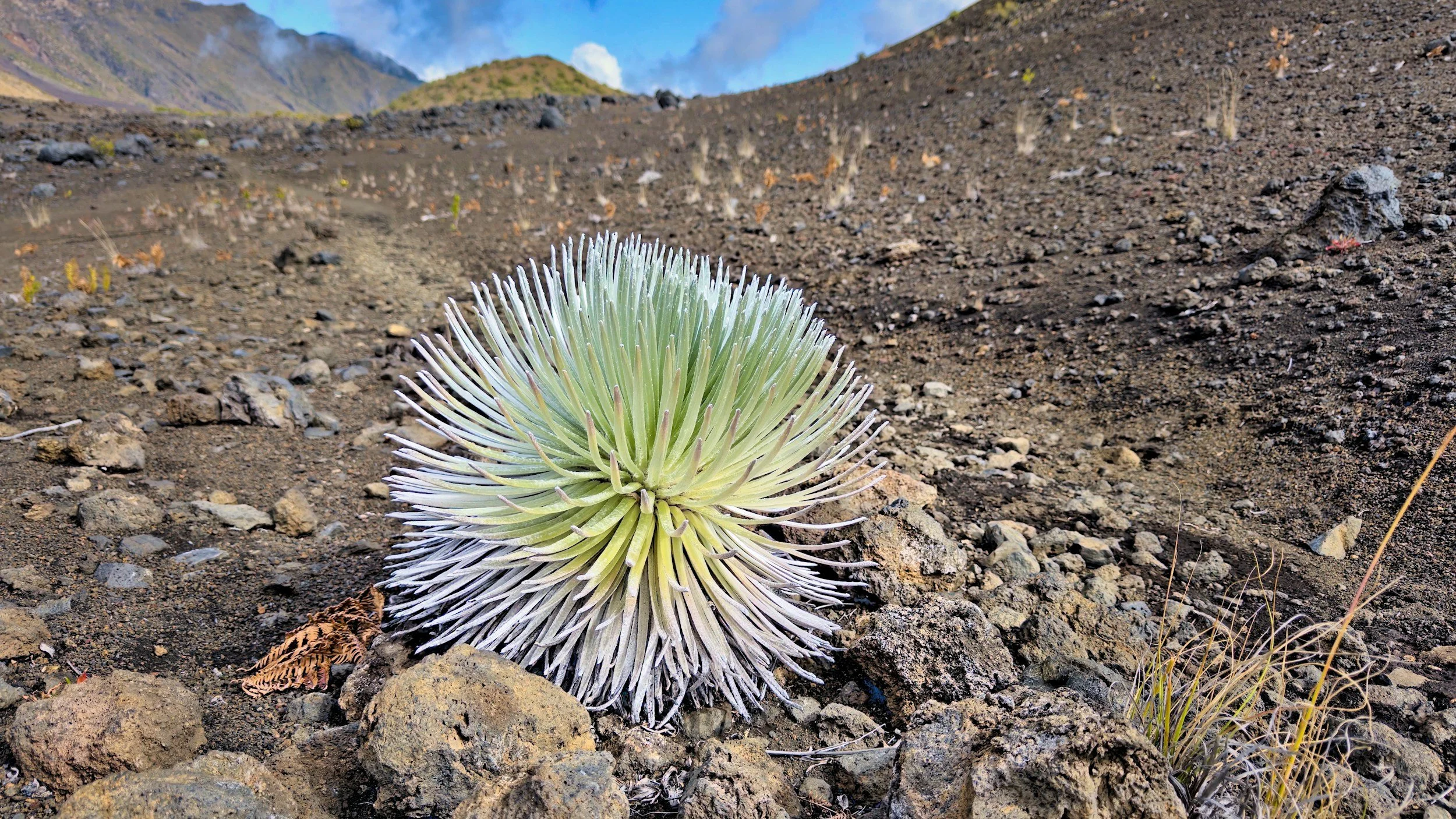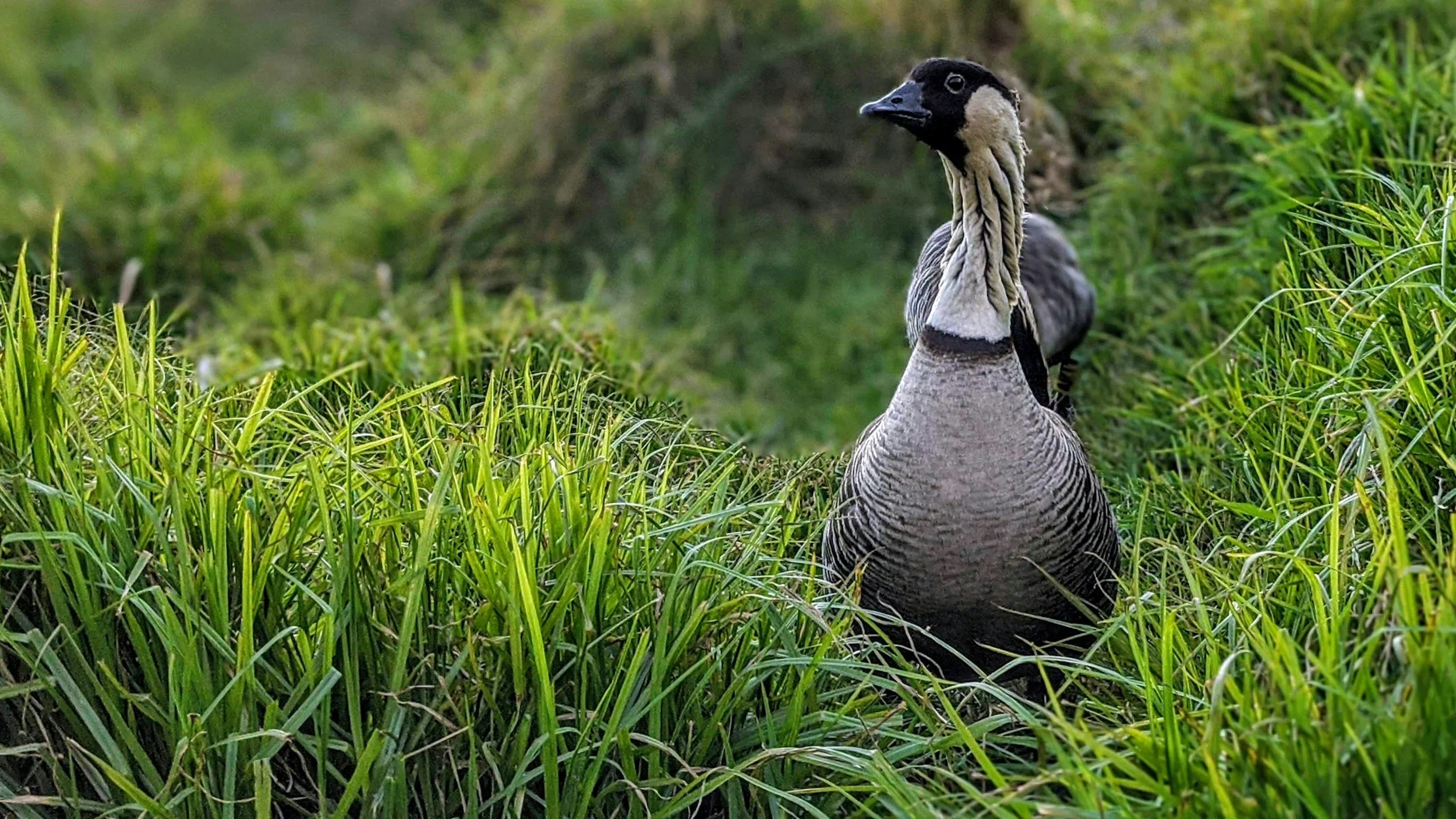How you can Protect Native Hawaiian Wildlife
Hawaiʻi’s native species are found nowhere else on Earth — and many are at risk. Here are simple actions you can take to make a difference:
Respect wildlife and their habitat
Prevent trampling of native plants and protect animal habitats by keeping to designated paths.
Keep your distance from wildlife
Getting too close to wild animals can cause stress, interrupt feeding or nesting, and even lead to injury — for them or you. Stay at least 50 feet from sea turtles and monk seals, and never try to touch, chase, or feed any wild animals.
Respect signs and protected zones
Follow posted guidance in beaches, forests, and conservation areas to help minimize human impact.
Clean your gear
Always clean your shoes, clothing, and equipment before and after hiking to prevent the spread of invasive species and plant diseases like Rapid ʻŌhiʻa Death.
Do not feed wildlife
Feeding wild animals can seem kind, but it’s harmful. It changes their natural behavior, makes them dependent on humans, and can lead to illness or aggression. It also attracts invasive predators.
Pack out what you pack in
Dispose of all trash properly. Litter can harm wildlife or attract invasive predators that threaten native species.
Drive carefully in wildlife zones
Slow down and watch for wildlife crossing signs, especially in areas where Nēnē or seabirds are present near roads.
Use reef-safe sunscreen
Choose mineral-based sunscreens without oxybenzone or octinoxate to protect coral reefs and marine life.
Spread awareness
Educate friends and visitors about Hawaiʻi’s unique and fragile ecosystems. The more people know, the more they can help.
Support native plants
If you live in Hawaiʻi, plant native species to provide habitat for birds and insects. Avoid using invasive plants in landscaping.
Avoid invasive plants and animals
Don’t bring non-native species to Hawaiʻi, and avoid planting invasive ornamentals in gardens.
Donate or volunteer
Support conservation organizations working in Hawaiʻi. Donations and volunteer work help protect endangered species and restore native habitats.

Featured Native Hawaiian Species
'I'IWI
(Drepanis coccinea)
-
Endangered
-
Bird
-
High-elevation rainforests
-
Avian malaria, Habitat Loss
🔗 USFWS ʻIʻiwi Profile
Honu
(Chelonia mydas)
-
Threatened
-
Marine Reptile (Hawaiian Green Sea Turtle)
-
Nearshore waters, nesting beaches
-
Fibropapilloma virus, poaching, coastal development
🔗 NOAA Green Turtle Info
'Ahinahina
(Argyroxiphium sandwicense)
-
Threatened
-
Alpine Plant (Silversword)
-
Vocanic slopes of Haleakalā and Mauna Kea.
-
Climate change, trampling by visitors
🔗 NPS Haleakalā Silversword Page
(Branta sandvicensis)
Nēnē
-
Threatened (Formerly Endangered)
-
Bird (Hawaiian Goose)
-
Grasslands, shrublands, lava fields — found on Hawai'i Island, Maui, and Kaua'i.
-
Introduced predators (such as cats, dogs, and mongoose), vehicle collisions. habitat degradation, human disturbance in nesting areas
🔗Learn More — Hawaii DLN
Hawaiian Monk Seal
(Neomonachus schauinslandi)
-
Endangered
-
Marine Mammal
-
Beaches, shallow reefs
-
Entanglement, habitat disturbance, low prey
🔗 NOAA Monk Seal Page







